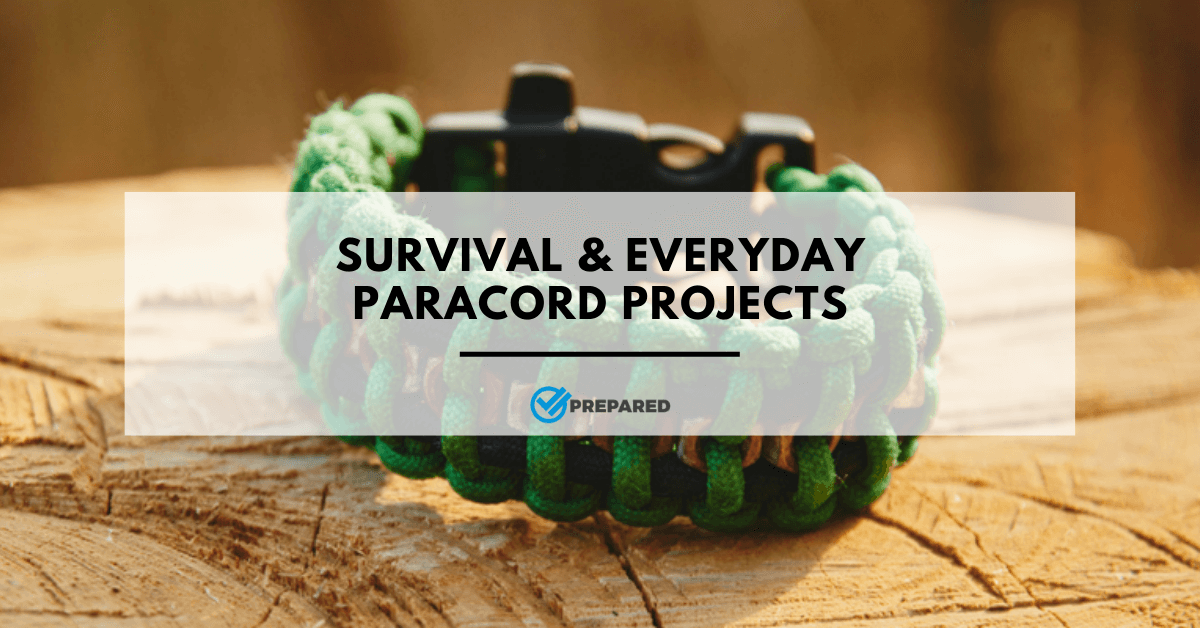Cordage is one of the most difficult substances to come by in a survival scenario. It also happens to be one of the most useful. You can replicate cordage using natural materials, but the finished product is rarely as strong as you would like. Of the different types of cordage that you can choose, paracord is one of your best options. It is thinner than climbing rope and less expensive. It is stronger and more durable than twine. It is more versatile than nylon rope.
The Popular 550 Paracord
The version that is most popular is 550 paracord, meaning that it can hold 550 lbs. of weight with a single strand. In addition to its strength, 550 paracords can be split open so you can use each of the seven internal strands. Each of these internal strands is ideal for most projects that do not need to hold a great deal of weight.
Paracord is not only useful in a survival situation, you can also use it for a range of normal day-to-day projects. Here are some paracord projects you can complete with your standard 550 paracord.
- Replace boot or shoe laces – Paracord is much stronger and more durable than normal shoe laces. In addition, having paracord on hand every day is great for survival scenarios. You can remove all the internal strands and still use the outer sheath to lace up your boots.
- Make a lanyard, bracelet, or watch band – Paracord is perfect for weaving projects that you can use or wear every day. In addition to being attractive and functional, these woven items allow you to keep dozens of feet of paracord on you in a tight package.
- Build a shelter – One of the most important uses for paracord in a survival scenario is constructing a shelter. You can use the cordage to secure poles together, construct a bed, or tie a tarp in place.
ALSO SEE: Priorities When Building A Survival Shelter
- Marking or wrapping tools – Often your most useful tools are a drab brown on black color that blends in with a natural environment. It is easy to set down a tool and not be able to find it again. You can simply tie a string of neon orange paracord to the tool for easy location. Also, for a better grip and shock absorption, you can wrap the handle with paracord and then tie off the ends.
- Make a net – While it requires some skill and time, weaving a fishing net can be incredibly effective for catching food for survival. In addition, a strong net can double as a hammock or can act as a foundation upon which to pile debris for a shelter. You can even build a crab trap with a good net.
- Hang a bear bag – Much of the country deals with bears on some level. The most dangerous scenario is having food, toothpaste, or deodorant around your camp. Your best bet is to put these items in a bag and hang it in a tree at least 10 feet off the ground. Paracord is heavy enough to fling over a branch, but inexpensive so you do not mind cutting it.
ALSO SEE: Survival Items To Have In Your Backpack
Other Paracord Projects
This list represents only a small number of paracord projects. Visit our Pinterest page to learn about other paracord projects to use in survival or non-survival situations. Always keep some paracord at home for when you need to use them in your own paracord project.

Chris was born and raised in South Africa and has worked in the field of risk management, organisational resilience, and business continuity for more than a decade. During his career he has seen how private and public sector organisations benefit from effective risk management and business continuity planning. Realising that families and communities can also benefit from the same tools, methodologies, and principles, he started Prepare with Foresight.
Prepare with Foresight was launched to assist individuals and families to have the peace of mind that they will be able to recover from and successfully adapt to the consequences of adverse events.

